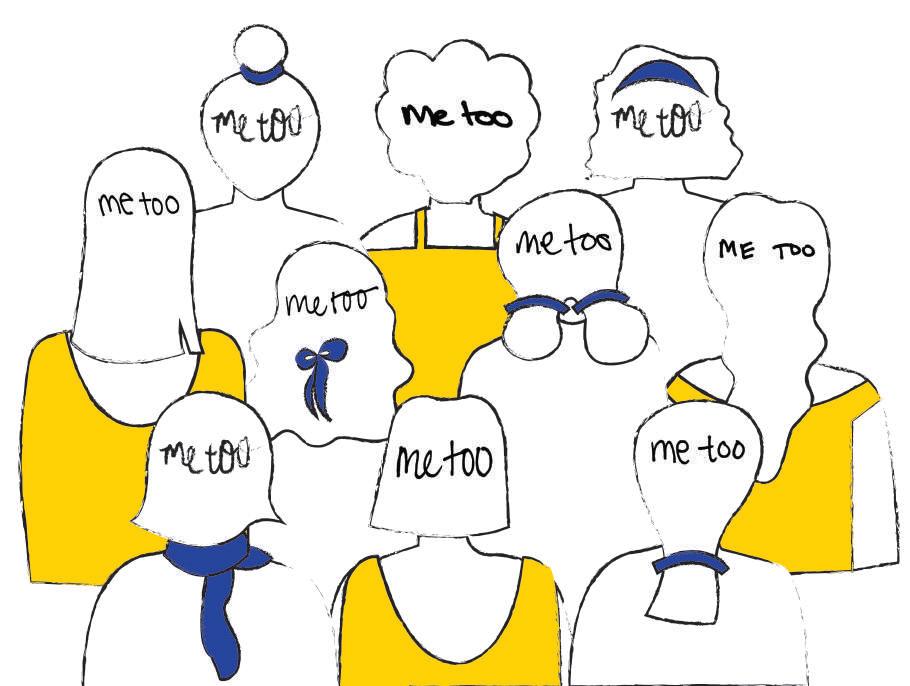The Right
In season 2 of the Netflix original, Grace and Frankie, the two female title characters devise a plan to produce and market a sex toy targeted towards older women. Although the program has been commended for tackling some rather difficult material regarding sexualtiy, its approach to female masturbation is hardly revolutionary. Female masturbation is one of the only remaining taboo topics when it comes to sex, so much so that even in relatively progressive media, the most acceptable way to reference it is through sex toys. One of the earliest examples of this in the media was on an episode of Sex and the City called “The Rabbit.” The women begin using a vibarator in their sex lives, a representation that, aside from being obviously very heteronormative, suggests that discussing female pleasure is only acceptable if there is a man involved, even if only symbolically. SHEI spoke to The New York Times bestselling author, Peggy Orenstein, about her book Girls & Sex, and taboos around female masturbation. When considering the stigma surrounding female masturbation, it’s important to start at the beginning. In Orenstein’s book Girls & Sex, she points to the flaws in the sexual education system in the United States. Starting from a young age, there are vast differences in how women and men are taught to think about sex, in all capacities, even their own bodies. Orenstein explains that when raising girls, parents often find it difficult to actually name their children’s genitals, while boys are made aware of theirs from a very young age. This causes women to grow up confused about their own anatomy, finding it to be an almost nameless entity. Even when anatomical charts are shown to children in sexual education classes, oftentimes much is left unnamed on the women’s body, leading to an internalized suppression of female sexuality. As children mature and sexual education expands, again boys and girls are taught ideas with many complex differences. Most prominently when discussing puberty, children are taught that as boys mature, alongside their physical changes comes an increase in sex drive and testosterone. With girls, however, puberty is often only defined by physical changes in their menstrual cycles, breast development and hair growth. “Boys have erections and wet dreams, and girls have periods and unwanted
76
SHEI Magazine
pregnancies. Oh boy! That’s fun, huh?” Orenstein quipped. Although the inclusion of male sex drive in discussion of puberty may seem like a relatively trivial detail, the exclusion of increased female sex drive actually becomes another internalized misunderstanding of innate female qualities. Girls grow up believing an interest in sex to be a part of boy’s nature, but not their own. Orenstein explained that an easy way to address this issue is to openly acknowledge female sexuality to girls at a young age. “I sat in on a puberty education class where the teacher just named everything and just said, ‘This is the clitoris; it’s for making good feelings,’” Orenstein explained. “That’s what you need to know when you’re ten years old,” she went on. Excluding the clitoris is one of the most common offensives when teaching sexual education to young women, eliminating any discussion of female pleasure. As Orenstein explained, in American Girls’ Care and Keeping of You Edition 2, a woman’s external genitalia diagram is provided with everything labeled but the clitoris. “What are they so afraid of ?” Orenstein questioned. Furthermore, girls learn shame about their bodies, particularly about their genitals. “They’re taught that they smell bad, or they taste bad, or they have to be embarrassed about them.” Orenstein explained, adding, “There’s a lot of anti-vagina talk.” As early as middle school, it is common knowledge that boys masturbate and look at porn. They are sexual beings, afterall. However, this conversation is generally nonexistent for girls, even in liberal and progressive environments. Due to the lack of discussion, particularly in the media, female masturbation is not normalized at all. “One thing I really noticed is how often male masturbation is talked about and how casually [in] all kinds of contexts.” Orenstein stated. The same is not true for women, and this inequality leads to all kinds of disparities in sexual relationships. My own informal research reinforced Orenstein’s conclusions. I found that it is incredibly rare for women to discuss masturbation with their female friends before college. Those who did felt an immense amount









